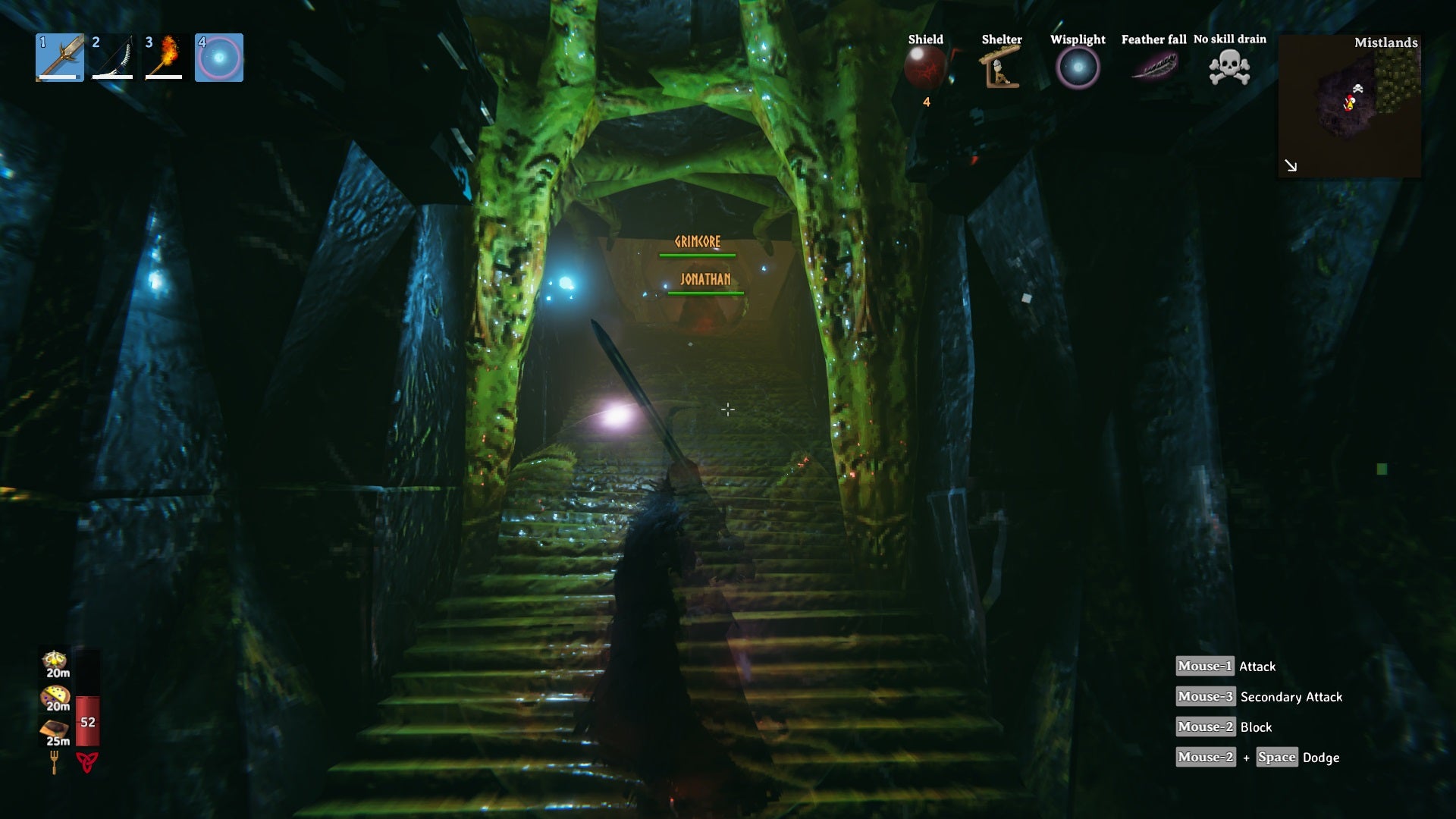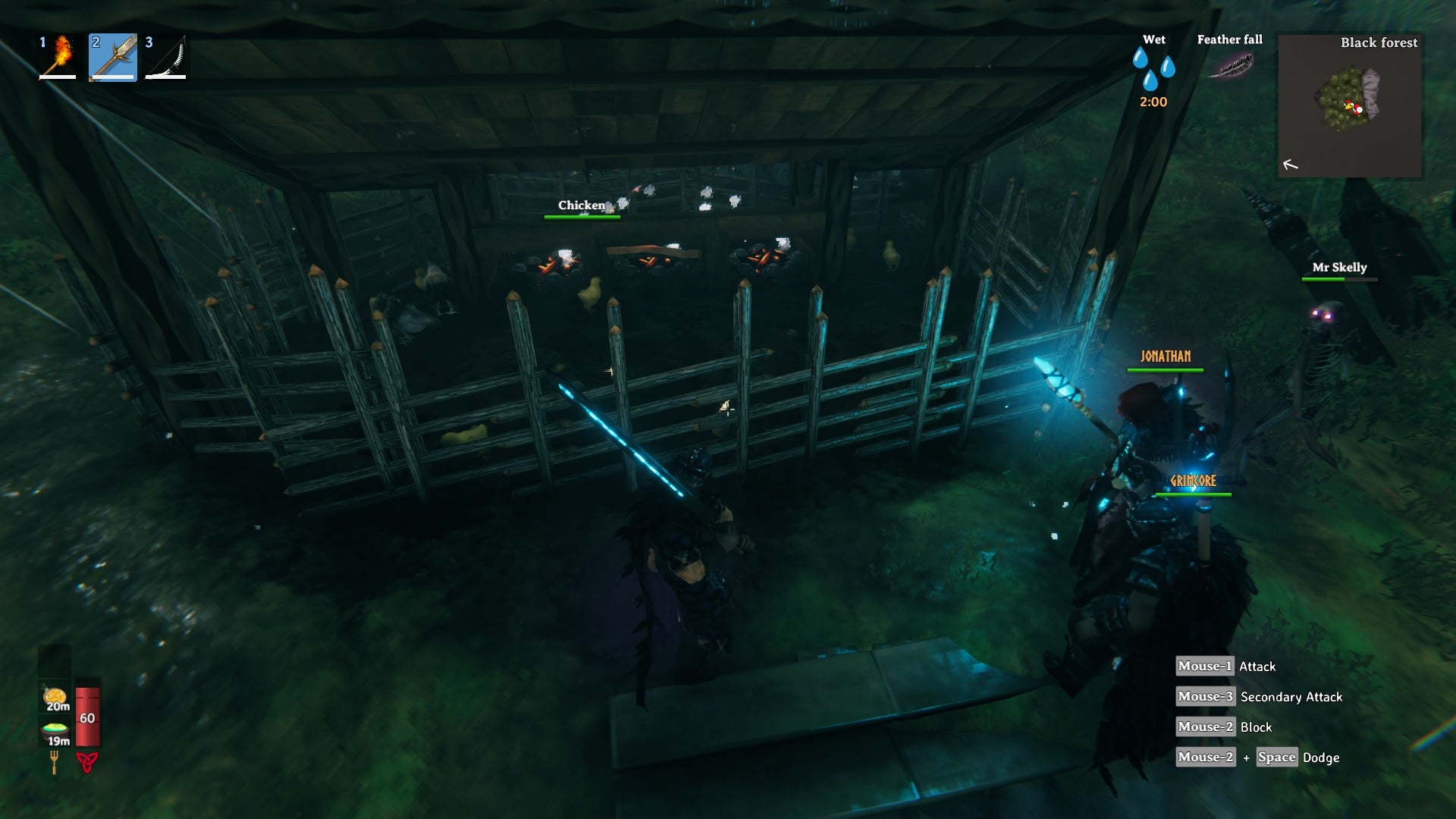That was my main takeaway, anyway. Valheim exploded onto the indie scene back in 2021, and managed to firmly grasp the attention and love of thousands all over the world. It’s tough, gritty, and hilarious with friends. But, if there was a criticism of the game post-release to Early Access, it was a lack of new content for those who pushed to the end game, as much of the post-launch support was refining and improving pre-existing content. Mistlands is clearly an attempt to fix that, a point confirmed by artist Robin Eyre and developer Jonathan Smars at Iron Gate Studios. “When we released in early access, we realised the game was pretty buggy,” Smars states. “So, we decided to not release any more content until it was stable enough for everyone to play the game. Going forward with Mistlands, we’ve established how much we want in a biome, and we want to see how we can blow their minds a little bit.” But what exactly is the Mistlands? Well, it’s a new endgame zone aimed at players who have already progressed through the pre-existing content. To enter, you’ll need to be decked out with some pretty sweet gear, as well as a light wisp acquired from a prior boss. Once you’re in, you can expect to face off against Seekers; ferocious and frankly spooky insectoids that populate the gloomy depths. What’s immediately apparent about the Mistlands is that it’s largely a distinct region compared to other fantastical video game worlds out there. According to the duo this is their big attempt to create something unique to Mistlands, especially since the next two zones, Ashlands and Deep North, are somewhat standard. “Way back in the day, it was meant to be this dark, brooding place. Much like swamps,” explains Eyre “Because of that, we didn’t want it to be swamps 2.0. You can basically think of Mistlands as if the swamps and mountains had a child.” For what it’s worth they’ve done a great job at making something fresh with the Mistlands. Ancient ruins can be found dotted around the region where some sweet loot can be found, small towers occupied by Dverger act as both safe spots and sources of loot if you’re willing to brave the repercussions of stealing from the well-armed folks living there, and huge stone rocks stretch upwards above the mist like fingers, allowing you to see your surroundings clearly. A personal highlight comes from the Seeker-invested ruins, made up of oily black stone and draped in sticky yellow mucus. In terms of aesthetic and feel, Eyre and Smars told me they were aiming to replicate that Alien vibe in these perilous dungeons, making sure to keep things claustrophobic and scary as enemies lurk and erupt out at you from doorways in all directions. It is really brilliant, and while I’m sure these will inevitably lose their impact as players continue to delve deep, my first impression has me certain of their ability to keep even the most dedicated players on their toes. With these new dangers comes new equipment. The most exciting addition comes in the form of magic and more legendary-looking weapons. While Valheim felt somewhat grounded, with swords, shields, and arrows making up the core of the experience, the team believe now is the time start slowly integrating in the mystical and otherworldly. “The mountains was the biome that was meant to hold the more magical stuff, but it felt too early to give players magical stuff. We don’t want to become World of Warcraft where things are ‘too epic’,” States Smars. “We don’t want players to be able to earn magic right away, we want you to go through the adventure, experience the hardships of the world, and then by the end of the game be proper Viking material, which Vikings would tell stories about.” Casting magic allows for a mage playstyle, with specific armour and the aether resource allows for a spell-slinging ranged approach to fights. Some of the stuff both looks and feels absurdly powerful compared to what players may have grown to expect. I asked whether Iron Gate Studios was concerned the addition of some super powerful magic could diminish the impact of pre-existing tooth and claw combat, and while it noted that it’d keep a close eye on balance, Iron Gate is confident that those of you out there who like playing the archer of tank will still play an important part due to the squishiness of magic-casters, and the limited resources they have to work with. For builders, a new zone means new resources, and new structures you can build. Using the new tiles and textures found in the Mistlands, players can build their own structures that fit the zone visually, replicating features like some sweet spiral staircases. With how dangerous the Mistlands are, slapping down a home in the mists isn’t a great idea, but thanks to the rocy peaks that shoot above the danger, lofty lodges are likely the way to go. Then there’s also fishing, which has gotten somewhat of a rework. Before, there wasn’t a huge reason to do it, but now you can display catches as trophies offering more of a flex factor in one of Valheim’s often unloved survival skills. Whether or not you’ll actually have any luck catching anything is a whole other matter, as I had the brilliant life experience of botching an attempt to reel in a fish in front of the lead devs. Not at all embarrassing, I assure you. But perhaps most important, hijinx still flows through Valheim in Mistlands. Scaling the terrain, holding your own in treacherous caverns and trailing to escape a Dverger tower with loot only to have the entire party explode and crush themselves under rubble is the sort of memory generator that keeps cooperative multiplayer games like Valheim in the hearts and minds of its player base. It’s an exciting moment for the game, with the future firmly set and adding more and more fresh content now that the team is confident in the quality of the experience already present. If you’ve perhaps fallen off Valheim as of late, Mistlands seems like the perfect excuse to jump back in. You can try out the Mistlands update yourself right now on the public test branch. I highly recommend it.

